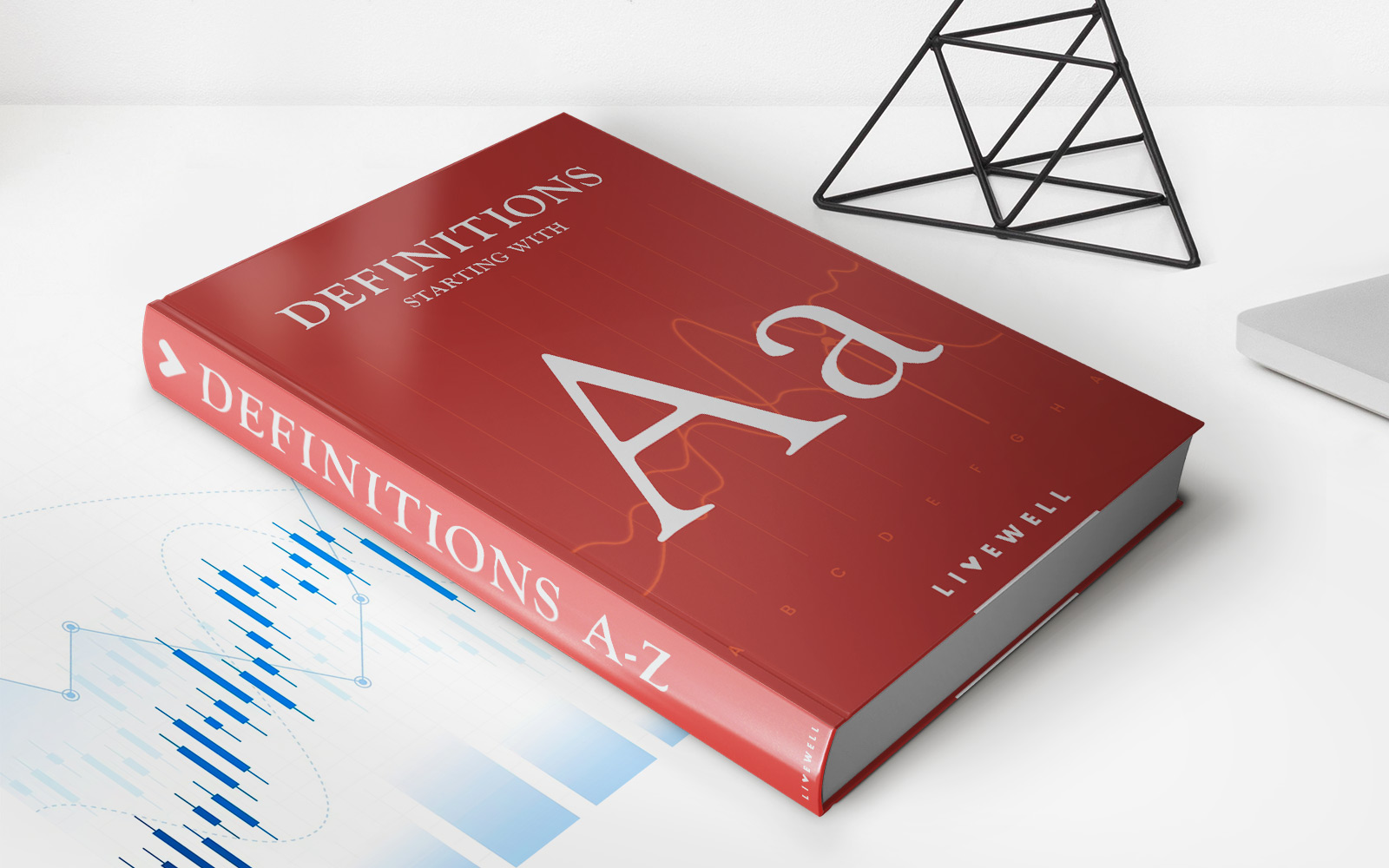

Finance
What Is A CVA In Accounting
Published: October 8, 2023
Learn what a CVA is in accounting and how it relates to finance. Gain insights into the role of CVA in financial analysis and decision-making.
(Many of the links in this article redirect to a specific reviewed product. Your purchase of these products through affiliate links helps to generate commission for LiveWell, at no extra cost. Learn more)
Table of Contents
Introduction
Welcome to the world of accounting, where numbers and financial data come together to provide valuable insights into a company’s performance. In the field of accounting, there are various tools and techniques used to assess and evaluate the financial health of an organization. One such tool is the Corporate Voluntary Arrangement, commonly known as CVA.
A CVA is a powerful mechanism that allows financially distressed companies to restructure their debts, negotiate with creditors, and regain control of their financial situation. It serves as an alternative to liquidation or bankruptcy and provides a lifeline to businesses facing financial uncertainty.
In simple terms, a CVA is a legally binding agreement between a financially distressed company and its creditors. It outlines a repayment plan that allows the company to repay its debts over an extended period of time, typically ranging from three to five years. This arrangement gives the company much-needed breathing space and enables it to continue operations while addressing its financial challenges.
So, why is a CVA important in the field of accounting? What benefits does it offer to companies in financial distress? How does the process of conducting a CVA work? In this article, we will delve into these questions and explore the role of CVAs in the world of accounting.
Definition of CVA
A Corporate Voluntary Arrangement (CVA) is a formal process that allows a financially distressed company to negotiate with its creditors and come up with a plan to repay its debts over a specified period of time. It is a legally binding agreement that provides a structured approach for the company to address its financial difficulties without resorting to liquidation or bankruptcy.
Under a CVA, the company works closely with a licensed insolvency practitioner who acts as a nominee to facilitate the agreement between the company and its creditors. The practitioner assesses the company’s financial situation, creates a repayment plan, and presents it to the creditors for approval.
The CVA typically includes provisions such as a reduced level of debt repayment, extended repayment terms, and a moratorium on any legal actions against the company during the duration of the arrangement. The aim is to help the company regain stability, improve cash flow, and ultimately turn its financial situation around.
It is important to note that not all companies are eligible for a CVA. The company must meet certain criteria, including being unable to pay its debts as they fall due, having a viable business that can generate future profitability, and having the support of its directors and stakeholders to pursue the CVA route.
Once the CVA is approved by the creditors, it becomes legally binding on all parties involved, and the company must adhere to the agreed-upon terms. Failure to comply can result in the termination of the CVA and may lead to other insolvency procedures.
Overall, a CVA provides a valuable tool for financially distressed companies to restructure their debts, alleviate financial burdens, and work towards a sustainable future. It offers a lifeline to businesses facing financial challenges and allows them to regain control of their financial situation while continuing their operations.
Purpose of CVA in Accounting
The purpose of a Corporate Voluntary Arrangement (CVA) in accounting is to provide a financially distressed company with an opportunity to address its debt burdens and regain control of its financial position. It serves as a strategic tool to help companies navigate through challenging times and avoid the detrimental consequences of liquidation or bankruptcy.
One of the primary purposes of a CVA is to enable the company to restructure its debts in a way that is manageable and sustainable. By negotiating with creditors, the company can often secure more favorable repayment terms, including reduced interest rates, extended repayment periods, and sometimes even a partial write-off of debt. This allows the company to alleviate cash flow constraints and make more affordable payments, increasing its chances of survival and future profitability.
A CVA also helps to preserve the company’s reputation and maintain strong relationships with its suppliers, customers, and other stakeholders. By entering into a formal agreement with creditors, the company demonstrates its commitment to resolving its financial challenges and taking responsibility for its debts. This can enhance the company’s credibility and improve its chances of maintaining vital business relationships that are crucial for long-term success.
Furthermore, a CVA provides a level of certainty and stability for the company and its stakeholders. With a structured and agreed-upon repayment plan, the company can better forecast its financial obligations and manage its cash flow more effectively. This stability allows the company to focus on its core operations and strategically plan for future growth and profitability.
Another purpose of a CVA in accounting is to avoid the disruptions and costs associated with a liquidation or bankruptcy process. Liquidation involves the sale of the company’s assets to repay creditors, while bankruptcy involves the distribution of assets under the supervision of the court. These processes are often time-consuming, expensive, and can result in the complete closure of the company. By opting for a CVA, the company can continue operating and preserving jobs, while also addressing its financial challenges.
Overall, the purpose of a CVA in accounting is to provide a lifeline to financially distressed companies, enabling them to restructure their debts, regain control of their financial situation, and work towards a sustainable future. It offers an alternative to liquidation or bankruptcy and provides a structured framework for companies to negotiate with creditors and find a viable solution for their financial difficulties.
Benefits of CVA in Accounting
A Corporate Voluntary Arrangement (CVA) offers several benefits to financially distressed companies in the field of accounting. These benefits not only help the company address its financial challenges but also contribute to its long-term viability and success. Let’s explore some of the key benefits of a CVA:
- Debt Restructuring: One of the primary benefits of a CVA is the opportunity to restructure the company’s debts. Through negotiations with creditors, the company can secure more favorable repayment terms, such as reduced interest rates and extended repayment periods. This allows the company to alleviate cash flow constraints, making debt payments more manageable and increasing the likelihood of financial recovery.
- Business Continuity: Unlike liquidation or bankruptcy, which may result in the closure of the company, a CVA allows the business to continue operating. This provides critical stability and preserves jobs, ensuring that the company can maintain its operations and focus on recovering financially.
- Preservation of Relationships: A CVA demonstrates the company’s commitment to resolving its financial difficulties and taking responsibility for its debts. By entering into a formal agreement with creditors, the company can maintain positive relationships with suppliers, customers, and other stakeholders. This is crucial for maintaining business continuity and enhancing the company’s chances of long-term success.
- Legal Protection: Once a CVA is approved, it provides the company with legal protection from legal actions by creditors. This provides a valuable breathing space for the company to address its financial challenges without the constant threat of legal proceedings. It allows the company to focus on implementing its recovery plan and returning to a stable financial position.
- Simplified Financial Management: A CVA provides a structured framework for debt repayment, with clear terms and agreed-upon schedules. This simplifies financial management and allows the company to better forecast its cash flow and make informed decisions. It provides a level of certainty and stability for the company and its stakeholders, enabling more effective financial planning and strategic decision-making.
- Long-Term Viability: By addressing financial challenges and implementing a successful CVA, a company can improve its financial position and enhance its long-term viability. The reduced debt burden and improved cash flow resulting from the CVA can provide the company with the necessary resources to invest in growth, increase its competitiveness, and ultimately achieve sustained profitability.
Overall, a CVA offers significant benefits to financially distressed companies in the field of accounting. It provides an opportunity to restructure debts, continue operations, preserve relationships, and achieve long-term viability. By taking advantage of a CVA, companies can navigate through financial difficulties and work towards a brighter and more prosperous future.
Importance of CVA in Accounting
The Corporate Voluntary Arrangement (CVA) holds immense importance in the field of accounting as it serves as a vital tool for financially distressed companies. The significance of a CVA can be attributed to several key reasons:
- Financial Rehabilitation: The primary importance of a CVA is its ability to provide a pathway for companies to recover from financial distress. By restructuring debts and negotiating with creditors, a CVA allows companies to alleviate their financial burdens and regain control of their financial position. This is crucial for companies seeking to return to profitability and sustainable growth.
- Preservation of Businesses: A CVA plays a pivotal role in preserving businesses that are facing financial difficulties. Instead of resorting to liquidation or bankruptcy, which can lead to the closure of the company, a CVA provides a viable alternative. By allowing the company to continue operating, a CVA safeguards jobs, retains valuable assets, and supports the overall economy.
- Protection for Creditors: A CVA benefits not only the financially distressed company but also its creditors. By agreeing to a CVA, creditors have a higher chance of recovering a portion of their debts compared to the liquidation or bankruptcy of the company. This is especially important for smaller creditors who may have limited resources and rely on the successful resolution of the company’s financial difficulties.
- Efficient Use of Resources: A CVA promotes the efficient use of resources for both the company and its stakeholders. Instead of engaging in costly and time-consuming legal processes, such as liquidation or bankruptcy, a CVA allows the company to focus on implementing a recovery plan and making productive use of its resources. It streamlines the financial rehabilitation process and enables the company to allocate its resources towards activities that can contribute to long-term success.
- Negotiated Solutions: One of the significant advantages of a CVA is the opportunity for a negotiated solution between the financially distressed company and its creditors. By working closely together, the company and its creditors can arrive at a mutually beneficial agreement that takes into account the interests of all parties involved. This collaborative approach can foster trust, preserve crucial business relationships, and set the foundation for future cooperation.
- Rebuilding Stakeholder Confidence: Financial difficulties can erode stakeholder confidence in a company. However, by implementing a successful CVA, a company can demonstrate its commitment to resolving its financial challenges and regain the trust of its stakeholders. The transparency and accountability provided by a CVA can help rebuild confidence among shareholders, employees, customers, and suppliers, thereby strengthening the company’s position in the market.
Overall, the importance of a CVA in accounting cannot be overstated. It serves as a lifeline for financially distressed companies, allowing them to rehabilitate their finances, preserve businesses, protect creditors’ interests, and efficiently utilize resources. By providing a structured and negotiated approach, a CVA promotes stability, stakeholder confidence, and the long-term viability of companies in need of financial rejuvenation.
Process of Conducting a CVA in Accounting
The process of conducting a Corporate Voluntary Arrangement (CVA) in accounting involves several key steps. It is essential to follow these steps meticulously to ensure a successful outcome. Let’s explore the typical process of conducting a CVA:
- Assessment: The first step is for the financially distressed company to seek professional advice from a licensed insolvency practitioner (IP). The IP will assess the company’s financial situation, including its assets, liabilities, cash flow, and viability. This assessment helps determine the feasibility of a CVA and whether it is the most appropriate solution for the company.
- Proposal Preparation: If a CVA is deemed appropriate, the IP, in collaboration with the company, drafts a comprehensive proposal. The proposal includes details about the company’s financial position, the reasons for its financial distress, and the proposed repayment plan for creditors. The proposal must outline how the company intends to generate sufficient cash flow to make regular payments to creditors.
- Approval of the Proposal: Once the proposal is prepared, it is presented to the company’s creditors for approval. A meeting is held, during which the creditors have the opportunity to review and vote on the proposal. For the CVA to proceed, the proposal must gain the support of creditors representing a specific percentage of the total debt, as required by law.
- Nominee’s Report: Following the approval of the proposal, the IP presents a nominee’s report to the court. The report provides an independent assessment of the proposed CVA, verifying its feasibility and outlining the potential benefits to creditors. The court reviews the report and decides whether to accept the proposed CVA and proceed with its implementation.
- Supervision and Implementation: If the court approves the CVA, the IP becomes the supervisor and takes on the responsibility of overseeing the implementation of the agreement. The supervisor ensures that the company adheres to the agreed-upon terms, including making regular payments to creditors. They also handle any creditor inquiries or disputes that may arise during the duration of the CVA.
- Monitoring and Reporting: Throughout the CVA’s duration, the IP monitors the company’s financial progress and reports on its performance to both the creditors and the court. Regular updates are provided to ensure transparency and compliance with the agreed-upon terms. The IP may also provide guidance and support to the company to help it stay on track with its recovery plan.
- Completion or Termination: Once all the terms of the CVA have been fulfilled, including the repayment of debts according to the agreed-upon schedule, the CVA is considered complete. A final report is prepared by the IP, stating that all obligations have been met, and the case may be closed. However, if the company fails to comply with the terms of the CVA, it may be terminated, and alternative insolvency procedures may be initiated.
The process of conducting a CVA requires collaboration between the financially distressed company, the licensed insolvency practitioner, and the creditors. Open communication, transparency, and compliance are key to a successful CVA. By following this process diligently, companies can address their financial difficulties and work towards a brighter financial future.
Factors Affecting the Success of a CVA in Accounting
Several factors can significantly impact the success of a Corporate Voluntary Arrangement (CVA) in accounting. It is crucial to consider these factors carefully, as they can determine the effectiveness and outcomes of the CVA. Let’s explore some key factors that influence the success of a CVA:
- Creditor Support: The level of support from creditors is a critical factor that can determine the success of a CVA. It is essential to have the support of a significant majority of creditors, both in terms of numbers and the value of debt owed. The willingness of creditors to compromise and accept the proposed repayment plan plays a vital role in the success of the CVA.
- Realistic Repayment Plan: The proposed repayment plan must be realistic and achievable within the financial capabilities of the company. It should take into account the company’s financial position, cash flow projections, and ability to generate sufficient funds for debt repayments. A well-prepared repayment plan increases the likelihood of creditor acceptance and the successful implementation of the CVA.
- Financial Viability: The underlying financial viability of the company is a crucial factor in the success of a CVA. Creditors are more likely to support a CVA if they have confidence that the company has the potential to recover, generate future profitability, and honor its obligations under the proposed arrangement. Assessing the company’s viability is essential to ensure that the CVA can lead to long-term financial sustainability.
- Management Commitment: The commitment and dedication of the company’s management to the CVA process play a pivotal role in its success. The management team must be actively involved in the development and implementation of the CVA, demonstrating their willingness to address the company’s financial difficulties and work towards a successful outcome. Their cooperation and adherence to the agreed-upon terms are crucial for the CVA’s effectiveness.
- Open Communication: Effective communication between the company, the licensed insolvency practitioner (IP), and the creditors is vital for a successful CVA. Clear and transparent communication about the company’s financial position, proposed repayment plan, and progress updates fosters trust and cooperation among all parties involved. It helps address concerns, resolve disputes, and ensure that everyone is working towards the common goal of financial recovery.
- Internal Restructuring: In some cases, internal restructuring may be necessary to support the success of a CVA. This may involve making operational changes, optimizing business processes, or implementing cost-saving measures. By addressing any underlying issues within the company, the chances of a successful CVA are increased, as it demonstrates a commitment to improving the company’s overall financial health.
- External Factors: External factors, such as market conditions, industry trends, and economic climate, can also impact the success of a CVA. It is important to consider these factors and assess how they may influence the company’s ability to implement the proposed repayment plan and realize its financial recovery goals. Adapting to external factors and remaining agile in the face of change can enhance the chances of CVA success.
Considering these factors can greatly contribute to the success of a CVA in accounting. By addressing creditor concerns, developing a realistic repayment plan, ensuring the financial viability of the company, fostering open communication, and making necessary internal adjustments, companies are more likely to achieve successful outcomes from their CVAs.
Limitations of CVA in Accounting
While a Corporate Voluntary Arrangement (CVA) can be a valuable tool for financially distressed companies in accounting, it also has certain limitations that should be considered. Understanding these limitations is essential for companies exploring the CVA option. Let’s explore some key limitations of a CVA:
- Creditors’ Approval: A significant limitation of a CVA is the requirement for approval from the company’s creditors. The success of a CVA depends on gaining sufficient support from creditors, both in terms of numbers and value of debt owed. If a significant number of creditors do not approve the proposed arrangement, the CVA may not proceed, and alternative solutions must be considered.
- Limited Scope: A CVA is primarily focused on addressing the company’s debt obligations. It may not fully address other underlying issues that may have contributed to the company’s financial distress, such as operational inefficiencies or market challenges. These issues may require separate strategies and efforts to ensure a complete financial recovery.
- Possible Dissent from Creditors: Not all creditors may be willing to accept the terms of the CVA, leading to potential dissent and challenges during the process. This can result in delays, disputes, and additional negotiation efforts to gain creditor acceptance. It is important to anticipate and manage potential creditor dissent effectively to ensure the smooth progression of the CVA.
- Impact on Credit Rating: Undertaking a CVA may have an adverse impact on the company’s credit rating. While it provides an opportunity to restructure debts and regain financial stability, the fact that the company required a CVA may affect its future borrowing ability and relationships with lenders. It is crucial to consider the long-term implications of a CVA on the company’s creditworthiness.
- Restrictions on Business Operations: During the CVA process, the company may face certain restrictions on its business operations. This can impact its ability to make significant financial commitments, enter into new contracts, or pursue growth opportunities. It is important to understand and plan for these restrictions to effectively manage day-to-day operations while undergoing the CVA.
- No Guarantee of Success: While a CVA provides a structured framework for debt repayment and financial recovery, there is no guarantee that it will be successful. The company must still execute its recovery plan, generate sufficient cash flow, and adapt to market conditions. The success of the CVA relies on the company’s ability to fulfill the agreed-upon terms and achieve sustainable profitability.
- Potential for Non-Compliance: There is a risk that the company may not be able to fully comply with the terms of the CVA, either due to unforeseen circumstances or difficulties in generating sufficient revenue. Failure to comply with the CVA can result in termination of the arrangement and potential consequences, such as the initiation of liquidation proceedings.
It is important to carefully consider these limitations and assess their potential impact when deciding to pursue a CVA. Seeking professional advice from a licensed insolvency practitioner is crucial to fully understand the implications and feasibility of a CVA for the specific circumstances of the company.
Examples of CVA in Accounting
Corporate Voluntary Arrangements (CVAs) have been used by numerous companies across various industries to address financial distress and achieve long-term viability. Here are a few examples of successful CVAs in accounting:
- Toys “R” Us: In 2018, the UK arm of the well-known toy retailer Toys “R” Us entered into a CVA to restructure its debts and address financial difficulties. The CVA allowed the company to close underperforming stores, negotiate lower rents with landlords, and reduce its overall debt burden. With the approval of creditors, the company was able to stabilize its financial position and continue operations, ensuring the presence of a well-loved brand in the UK market.
- British Home Stores (BHS): BHS, a British department store chain, faced significant financial challenges in 2016. The company entered into a CVA to restructure its debts and secure its future. The CVA enabled BHS to negotiate revised rental agreements, reduce costs, and address its pension obligations. However, despite the CVA, the company ultimately went into administration and ceased operations. Nevertheless, the CVA allowed for the preservation of jobs and provided some level of recovery for creditors.
- House of Fraser: House of Fraser, a prominent UK department store, underwent a CVA in 2018 to tackle financial difficulties caused by changing market dynamics and increased competition. The CVA involved store closures, rent reductions, and the acquisition of new investment. By successfully implementing the CVA, House of Fraser was able to stabilize its finances, maintain operations, and secure its position in the retail industry.
- Carluccio’s: Carluccio’s, a restaurant chain specializing in Italian cuisine, went through a CVA in 2020 amid the COVID-19 pandemic’s impact on the hospitality industry. The CVA allowed the company to negotiate rent reductions, close underperforming locations, and secure funding. Through the CVA, Carluccio’s managed to safeguard jobs and continue serving customers across its remaining restaurants.
- Gourmet Burger Kitchen (GBK): GBK, a popular burger chain in the UK, experienced financial challenges due to market saturation and increased operating costs. In 2018, the company entered into a CVA to restructure its debts and close a number of non-profitable restaurants. The CVA enabled GBK to reduce rent expenses and streamline its operations, ultimately supporting the company’s recovery and allowing it to continue serving its customers.
These examples demonstrate how CVAs have been utilized by companies in the face of financial distress. While the outcomes vary, successful implementation of a CVA can provide companies with an opportunity to restructure and regain control of their financial position, contributing to their survival and long-term success.
Conclusion
Corporate Voluntary Arrangements (CVAs) play a vital role in the field of accounting, providing financially distressed companies with an alternative to liquidation or bankruptcy. A CVA allows companies to restructure their debts, negotiate with creditors, and work towards regaining financial stability. Throughout this article, we have explored the definition, purpose, benefits, importance, and limitations of CVAs in accounting.
CVAs offer several benefits to financially distressed companies, including debt restructuring, business continuity, preservation of relationships, legal protection, simplified financial management, and long-term viability. By entering into a CVA, companies can address their financial challenges while preserving jobs and critical business relationships.
However, it is important to consider the limitations and factors that can influence the success of a CVA. These include the need for creditor approval, realistic repayment plans, financial viability, management commitment, open communication, and potential restrictions on business operations. Understanding these elements helps companies manage expectations and navigate the CVA process effectively.
Real-world examples have demonstrated how CVAs have been successfully used by companies in various industries to overcome financial difficulties and achieve stability. Companies like Toys “R” Us, House of Fraser, and Carluccio’s have utilized CVAs to restructure, reduce costs, and secure their futures.
In conclusion, a CVA is a powerful tool in the accounting world, providing financially distressed companies with the opportunity to restructure their debts, address challenges, and move towards financial recovery. By exploring the CVA option with the guidance of a licensed insolvency practitioner, companies can navigate through financial difficulties, preserve their businesses, and emerge stronger and more resilient in the long run.














